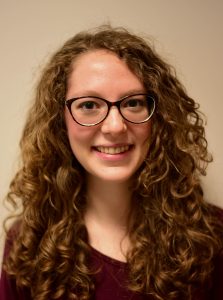Best Poster Awards – Seeing is Believing
For the 5th time, the EMBL Advanced Training Centre played host to 466 researchers and imaging specialists at the EMBO|EMBL Symposium: Seeing is Believing – Imaging the Molecular Processes of Life (9 – 12 October 2019), where cutting-edge applications illustrated how imaging can answer biological questions and capture the dynamics of life.
Out of the 248 posters presented, 2 stood out from the rest and were awarded a poster prize based on popular vote. Here we present the abstracts and posters of the winners.
CalQTrace: Simultaneous Calculation and Quantification of 100,000 immune activation Traces at single-cell resolution using CNN

Authors: Liliana Barbieri (1), Kseniya Korobchevskaya (2), Azeem Ahmad (3), Huw Colin-York (1), Aurelien Barbotin (4), Glykeria Karanika (1), Loic Peters (5), Isabela Pedroza-Pacheco (4), Angela Lee (1), Lena Cords (1), Anish Priyadarshi (3), Dominic Waithe (6), Jana Kohler (6), Christoffer Lagerholm (6), Balpreet Singh Ahluwalia (3), Marco Fritzsche (2)
Quantification of immune cell activation is essential to the understanding of their effector function. Tracing activation signatures like cellular calcium release and the expression of surface markers in response to activation signals allows the classification of the course of immune cell activation from early triggering events to late differentiation. However, robust quantitative platforms for such measurements represent a major challenge, restricting the analysis to small single-cell population or more recently to cell ensembles with high-dimensional parameter analysis tools. Here, we introduce a combination of a convolutional neural network-based CalQTrace (Calculation and Quantification of Trace) software, together with a Graphical User Interface, and an optical high-throughput light-sheet platform, allowing the simultaneous fully automated quantitation of immune cell activation traces of >100,000 live immune cells. CalQTrace enables user-independent statistically robust classification and quantification of multiple fluorescent activation markers including calcium, CD25+/- expression, and cell viability tracking single cells in space and time within a 5 mm x 5 mm large-field-of-view, opening-up unprecedented insights into physiological activation tracing in living immune cells.
(1) MRC Human Immunology Unit, University of Oxford, United Kingdom
(2) Kennedy Institute for Rheumatology, University of Oxford, United Kingdom
(3) The Arctic University of Norway, Norway
(4) University of Oxford, United Kingdom
(5) University College London, United Kingdom
(6) Weatherall Institute of Molecular Medicine, University of Oxford, United Kingdom
Poster currently not available
Bleaching-insensitive STED microscopy with exchangeable fluorescent probes

Authors: Christoph Spahn (1), Florian Hurter (1), Mathilda Glaesmann (1), Jonathan Grimm (2), Luke Lavis (2), Hans-Dieter Barth (1), Marko Lampe (3), Mike Heilemann (1)
Photobleaching affects image quality and resolution in fluorescence microscopy, and thus limits the extractable information. This is in particular relevant for super-resolution microscopy where typically high laser intensities are used. In order to minimize photobleaching, we repurposed the use of exchangeable fluorescent probes, as used in single-molecule localisation microscopy methods such as Point Accumulation for Imaging in Nanoscale Tomography (PAINT) [1], for STED microscopy. We demonstrate pseudo-permanent labeling of target structures and constant exchange of photobleached fluorophores. This concept allows for whole-cell, 3D, multi-color and live-cell STED microscopy [2]. Using transiently binding hydrophobic dyes and fluorophore-labeled major minor groove binders [3, 4], we visualised the nanostructure of chromatin, cell membranes and organelles in bacterial and mammalian cells in 3D. To expand the range of targets, we employed oligonucleotide-labeled antibodies that transiently bind fluorophore-labeled oligonucleotides, as used in single-molecule super-resolution imaging with DNA-PAINT [5], and demonstrate multi-color STED imaging.
References:
[1] Sharanov and Hochstrasser, PNAS 103 (50), 18911-18916 (2006)
[2] Spahn et al., Nano Letters 19 (1), 500-505 (2019)
[3] Lukinavičius et al., Nature Communications 6, 8497 (2015)
[4] Spahn et al., Scientific Reports 8, 14768 (2018)
[5] Schnitzbauer et al., Nature Protocols 12(6), 1198-1228 (2017)
(1) Johann Wolfgang Goethe-University Frankfurt, Germany
(2) HHMI – Janelia Research Campus, United States of America
(3) EMBL Heidelberg, Germany
Working on your own conference poster? Then check out 10 tips to create a scientific poster people want to stop by .